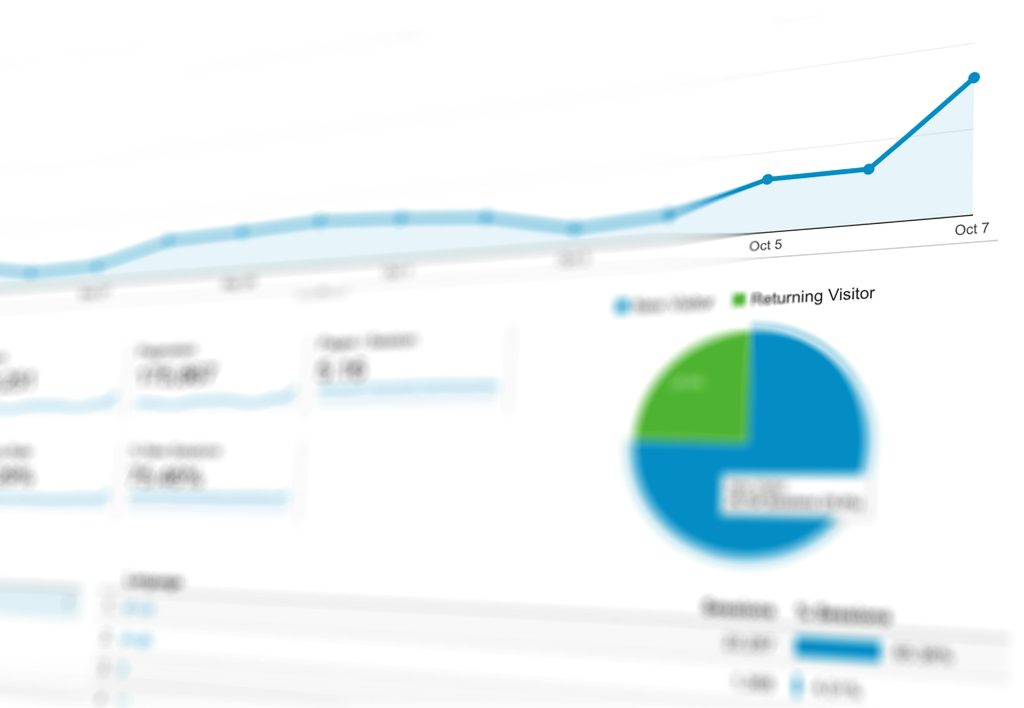
Introduction
Effective customer segmentation, the process of grouping customers with similar characteristics into distinct segments, empowers businesses to deliver targeted marketing campaigns and personalized experiences. However, traditional segmentation methods based on intuition or limited data can be inaccurate and lead to missed opportunities.
This is where data analytics steps in as a game-changer. By leveraging data analytics for effective customer segmentation, businesses can unlock a treasure trove of insights and achieve a deeper understanding of their customer base.
Benefits of Using Data Analytics for Effective Customer Segmentation
Here’s how data analytics empowers effective customer segmentation:
Deeper Customer Understanding
Data analytics allows you to go beyond basic demographics and explore the plethora of customer behavior. Through website analytics tools, purchase history analysis, and customer surveys, you can glean valuable insights into:
- Customer Needs and Preferences: Identify the underlying motivations, interests, and pain points driving customer behavior. This allows you to tailor your offerings and messaging to resonate with their specific needs.
- Customer Journey: Map the customer journey, understanding their touchpoints with your brand, from initial interaction to purchase and beyond. This knowledge empowers you to personalize the customer journey at every stage.
- Customer Lifetime Value (CLTV): Segment customers based on their predicted lifetime value, allowing you to prioritize high-value customers and optimize marketing efforts accordingly.
Improved Targeting and Personalization
Gone are the days of generic marketing messages. With data analytics, you can segment your customer base and craft targeted marketing campaigns that resonate with each segment. This laser-focused approach leads to:
- Increased Relevancy: Deliver marketing messages that are relevant to each customer segment’s specific needs and interests. This grabs attention, sparks engagement, and ultimately drives conversions.
- Personalized Product Recommendations: Utilize purchase history and website behavior data to recommend products that are likely to appeal to each customer segment. This personalized shopping experience fosters customer satisfaction and encourages repeat business.
- Enhanced Customer Experience: Personalization extends beyond marketing. By understanding customer segments, you can personalize the entire customer journey, from product recommendations to website content, creating a more engaging experience.
Data-Driven Decision Making
Intuition can be a valuable asset, but data-driven decisions are the cornerstone of successful business strategies. Data analytics empowers you to leverage customer segmentation data to make informed decisions regarding:
- Product Development: Identify trends and preferences within customer segments to inform product development and ensure your offerings cater to their evolving needs.
- Marketing Budget Allocation: Allocate marketing resources strategically by focusing on high-value customer segments with the greatest potential return on investment (ROI).
- Inventory Management: Analyze purchase patterns within customer segments to optimize inventory management and avoid stockouts or overstocked items.
Increased Customer Lifetime Value (CLTV)
Customer Lifetime Value (CLTV) refers to the total revenue a customer generates throughout their relationship with your brand. Effective customer segmentation based on data analytics empowers you to identify and nurture high-value customers. Here’s how:
- Targeted Loyalty Programs: Develop loyalty programs tailored to the needs and preferences of high-value customer segments, incentivizing repeat purchases and increasing their overall CLTV.
- Retention Strategies: Analyze customer behavior patterns within each segment to identify churn risks and develop targeted retention strategies to keep valuable customers engaged.
- Upselling and Cross-Selling Opportunities: Leverage customer segmentation data to identify upselling and cross-selling opportunities within different segments, maximizing revenue potential from each customer.
Enhanced Customer Engagement
Customer engagement is all about creating interactions and building relationships with your audience. Data analytics empowers you to tailor your communication and engagement strategies to resonate with each customer segment. Here’s how:
- Personalized Content Marketing: Create targeted content marketing campaigns based on the interests and needs of each segment. This could involve blog posts, social media content, or email newsletters featuring topics relevant to their specific pain points and preferences.
- Segmented Email Marketing: Segment your email lists and send targeted campaigns with personalized messages and product recommendations that resonate with each segment. This personalized approach boosts email open rates, click-through rates, and overall customer engagement.
- Community Building: Identify customer segments with shared interests and create online communities or forums where they can connect and interact. This fosters brand loyalty and encourages customer-to-customer engagement.
Data-Driven Decision-Making with JazzUp AI
Customer Segmentation is a science that requires precision. For example, errors in segmentation may lead to creating the wrong segments and sending personalized emails to them, like sending a Mother’s Day email to a segment that primarily consists of men between the ages of 20 and 25.
So, how do you ensure that your customer segments are right? Data-driven segmentation provides a precise way to ensure that the insights from your data are accurate. Using machine learning, JazzUp AI analyzes data from different sources and generates insights your e-commerce business can work with within seconds.
How JazzUp AI Can Help Your Business Make Data-Backed Decisions
- Enhanced Customer Segmentation: JazzUp uses machine learning to fine-tune your customer segments using data provided from different sources, creating niche segments that you can target effectively. The result is clearly defined, actionable insights that can improve your e-commerce marketing outcome.
- Marketing Strategy: JazzUp AI doesn’t just generate insights from data analysis, it also creates marketing strategies for you to connect with your customers, allowing you to effectively speak to each customer segment in the right way and right where they are.
- Inventory Monitoring: JazzUp AI identifies patterns in your orders and inventory, allowing you to note your star products, who buys them, and how often you should restock them.
How JazzUp AI works
JazzUp AI can integrate into your E-Commerce platform with our secure Wix and Shopify APIs. Don’t have a Wix or Shopify shop? You can upload your data via CSV to your dashboards and view insights, learn marketing strategies, and generate copy for your email segments.
Ready to improve your customer segmentation results with machine learning? Sign up for JazzUp AI today.
Data Analytics Tools for Customer Segmentation

Unlocking the power of data-driven customer segmentation hinges on the right tools. Let’s dive into some of the most valuable weapons in your customer segmentation arsenal:
1. Customer Relationship Management (CRM) Systems:
Think of your CRM as a centralized customer command center. It stores a wealth of customer data, including purchase history, demographics, communication preferences, and support interactions. This rich data trove becomes the foundation for segmentation.
Example: An online clothing retailer uses their CRM to segment customers based on purchase behavior. They identify a segment of fashion-forward customers who frequently purchase new arrivals. Leveraging this segmentation, they can target this segment with email campaigns showcasing the latest trends and offer them exclusive early access to new collections.
2. Website Analytics Tools:
Ever wondered how customers navigate your website? Website analytics tools like Google Analytics provide a treasure trove of insights into customer behavior on your digital storefront. By analyzing website traffic, page visits, time spent on specific pages, product interactions, and clickstream data, you can segment customers based on their online activity.
Example: An electronics retailer uses Google Analytics to segment customers based on their browsing behavior. They identify a segment of visitors who spend significant time researching high-end TVs. This segment likely represents customers with higher purchase intent. The retailer can then launch targeted ad campaigns featuring these premium TVs and offer them personalized recommendations for compatible accessories.
3. Data Warehouses and Business Intelligence (BI) Tools:
Imagine a vast digital vault storing all your customer data from various sources – website interactions, CRM systems, social media engagement, and loyalty programs. This is the realm of data warehouses. Business Intelligence (BI) tools act as the key, unlocking hidden patterns and trends within this massive dataset. By integrating customer data with website analytics and other sources, BI tools empower you to create highly nuanced customer segments.
Example: A travel agency leverages a data warehouse to combine customer booking history, demographics, and social media interactions. BI tools analyze this data to identify a segment of young professionals interested in adventure travel. The agency can then segment their email marketing campaigns, sending targeted promotions for weekend getaways and adrenaline-pumping activities to this specific segment.
4. Customer Data Platforms (CDPs):
While CRMs and data warehouses manage data from specific sources, Customer Data Platforms (CDPs) take a holistic approach. Think of a CDP as a data maestro, unifying customer data from various sources into a single, unified customer profile. This comprehensive view empowers you to create more sophisticated and data-driven customer segments that account for the entire customer journey across different touchpoints.
Example: A fitness apparel brand utilizes a CDP to combine customer purchase history, website behavior, and app engagement data. By analyzing this unified profile, they identify a segment of fitness enthusiasts who regularly purchase running gear and utilize the brand’s training app. The brand can then segment their marketing campaigns, sending targeted email promotions for new running shoes and personalized training plans within the app to this specific segment.
5. Machine Learning (ML) and Artificial Intelligence (AI):
For businesses dealing with massive datasets and complex customer behavior patterns, advanced AI and Machine Learning (ML) techniques can be game-changers. These powerful tools automate the customer segmentation process, identifying hidden patterns and segments that might be missed through traditional methods.
Example: A streaming service utilizes ML algorithms to analyze customer viewing habits and preferences. The AI engine identifies a segment of viewers who binge-watch historical documentaries. The streaming service can then segment their content recommendations, suggesting similar documentaries and exclusive interviews with prominent historians to this specific segment.
By harnessing the power of these data analytics tools, businesses can unlock a deeper understanding of their customers, personalize the customer journey at every touchpoint, and ultimately achieve sustainable growth in today’s competitive landscape. Remember, segmentation is an ongoing process. As your business evolves and customer behavior changes, continuously refine your segmentation strategies to ensure they remain effective in driving customer engagement and business success.
Strategies for Effective Customer Segmentation: A Roadmap to Success
Harnessing the power of data analytics unlocks possibilities for customer segmentation, but a well-defined strategy is the key to maximizing its effectiveness. Here’s a roadmap outlining some key strategies for successful customer segmentation, complete with implementation examples:
1. Define Your Segmentation Goals:
The foundation of any effective segmentation strategy starts with clearly defined goals. What do you aim to achieve through customer segmentation? Here are some common goals:
- Increase Sales: Segment customers based on purchase behavior and buying power to identify high-value segments. Develop targeted marketing campaigns and promotions tailored to their needs, ultimately driving sales growth.
- Boost Customer Engagement: Segment customers based on interests and online behavior. Create personalized content marketing campaigns and social media strategies that resonate with each segment, fostering deeper engagement.
- Improve Customer Retention: Analyze customer behavior patterns within each segment to identify potential churn risks. Develop targeted retention strategies with personalized offers and loyalty programs to keep valuable customers engaged.
Implementation Example:
An online sporting goods retailer wants to increase sales of their new line of fitness trackers. They define their segmentation goal as “boosting sales within the fitness enthusiast segment.”
2. Identify Relevant Data Sources:
Effective customer segmentation hinges on rich and comprehensive data. Utilize a variety of data sources to create a well-rounded customer profile for segmentation purposes. Here are some common data sources:
- Customer Relationship Management (CRM) Systems: Demographics, purchase history, communication preferences.
- Website Analytics Tools: Website traffic, page visits, time spent on specific pages, product interactions.
- Email Marketing Platforms: Email engagement data, open rates, click-through rates.
- Social Media Analytics: Social media interactions, interests, brand sentiment.
- Customer Surveys and Feedback Forms: Direct customer insights on needs, preferences, and pain points.
Implementation Example:
A travel agency wants to segment their customer base to personalize their marketing campaigns. They identify relevant data sources including demographics (age, income) from their CRM system, travel preferences (destinations, activities) gleaned from past bookings, and email engagement data to understand customer interest in specific promotions.
3. Choose the Right Segmentation Criteria:
The secret to successful segmentation lies in selecting the right criteria to differentiate your customer base. Here are some common segmentation criteria:
- Demographics: Age, gender, income, location, family size. (Example: A clothing brand segments customers by age group to tailor product recommendations and marketing messages to resonate with different generations.)
- Psychographics: Interests, values, lifestyle, personality traits. (Example: A streaming service segments users based on interests like true crime or documentaries, allowing them to recommend similar shows and personalize content suggestions.)
- Behavioral Segmentation: Purchase history, website behavior, app usage patterns. (Example: An e-commerce platform segments customers based on purchase frequency to identify high-value customers and offer them exclusive loyalty program benefits.)
- Needs-Based Segmentation: Customer pain points, desired outcomes, buying motivations. (Example: A software company segments customers based on their business needs to recommend specific software solutions that address their unique challenges.)
- Geographic Segmentation: Location, language, time zone. (Example: A clothing retailer segments customers by geographic location to tailor marketing campaigns with promotions relevant to seasonal weather conditions in different regions.)
Implementation Example:
A subscription box service catering to pet owners wants to personalize their offerings. They decide on a multi-criteria segmentation approach, combining demographics (age of pet owner) with psychographics (pet owner’s interests in organic products) and behavioral data (frequency of subscription renewals). This allows them to curate subscription boxes specifically tailored to different customer segments.
4. Develop Customer Profiles:
Once you’ve segmented your customer base, it’s crucial to develop detailed customer profiles for each segment. These profiles should outline the characteristics, needs, preferences, and pain points of each segment.
Implementation Example:
A beauty brand segments their customers by skin type (dry, oily, combination). They develop customer profiles for each segment, outlining their specific skincare concerns, preferred product types (moisturizers, cleansers, serums), and typical purchase behavior. This allows them to personalize product recommendations, marketing messages, and even website content to resonate with each customer segment.
5. Continuously Monitor and Refine:
Customer behavior and preferences are not static. It’s essential to regularly monitor the effectiveness of your segmentation strategies and refine them as needed. Here are some key monitoring practices:
- Track Key Performance Indicators (KPIs): Monitor relevant KPIs like website traffic, conversion rates, customer engagement metrics, and revenue growth within each segment. Analyze this data to identify any changes in customer behavior or segment performance. For example, a segment previously high in engagement might show declining interest.
- Refine your segmentation criteria and customer profiles as needed to ensure they remain accurate and reflect evolving customer needs.
- Experiment with different segmentation techniques to identify the most effective approach for your business.
Conclusion
Effective customer segmentation is no longer a competitive edge, it’s a necessity in today’s data-driven business landscape. By harnessing the power of data analytics, implementing well-defined segmentation strategies, and continuously adapting to customer evolution, businesses can unlock a world of possibilities:
- Deeper customer understanding fuels personalized experiences and fosters brand loyalty.
- Targeted marketing campaigns optimize resource allocation and maximize return on investment (ROI).
- Data-driven decision-making empowers businesses to tailor product offerings and cater to ever-changing customer needs.
- Increased customer lifetime value (CLTV) boosts revenue and ensures long-term business sustainability.
Embrace the power of data analytics, embark on the journey of customer segmentation, and watch your business thrive in the competitive landscape. With a customer-centric approach empowered by data, you can unlock a world of growth and success.


